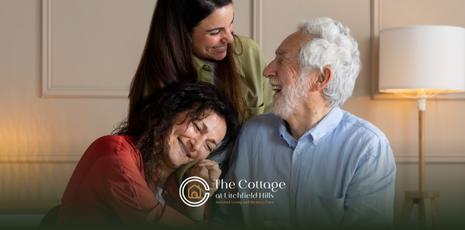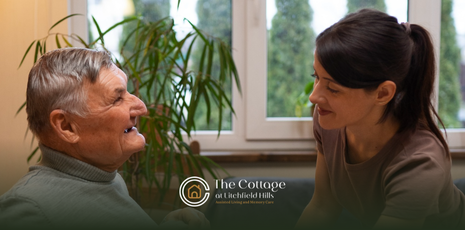The Benefits of Walking for Older Adults

Key Highlights
- Walking is a safe, low-impact exercise suitable for older adults of all fitness levels.
- Regular walking improves heart health, circulation, and joint mobility.
- Walking supports mental health, reduces stress, and enhances cognitive function.
- Social walking groups foster community engagement and reduce isolation.
- Walking routines can be adapted for all mobility levels, indoors or outdoors.
Walking Benefits for Seniors
Walking is one of the simplest yet most effective forms of exercise, especially for older adults. Unlike high-intensity workouts or complex gym routines, walking is accessible, low-impact, and requires minimal equipment. Beyond physical fitness, walking provides emotional, cognitive, and social benefits, making it an ideal activity to promote holistic health in older adults.
Physical Health Benefits of Walking
Maintaining mobility and overall health is essential as we age, and walking offers numerous advantages:
1. Cardiovascular Health
Walking increases heart rate, improves circulation, and strengthens the heart muscle. Benefits include:
- Reduced risk of heart disease and stroke
- Lowered blood pressure
- Improved cholesterol levels
2. Bone and Joint Health
Weight-bearing activities like walking help maintain bone density and joint flexibility:
- Reduces risk of osteoporosis
- Improves joint mobility and reduces stiffness
- Supports balance and reduces fall risk
3. Weight Management and Metabolism
Consistent walking burns calories and helps regulate body weight:
- Enhances metabolism and digestion
- Reduces the risk of obesity-related conditions
- Supports healthy blood sugar levels
4. Muscular Strength and Flexibility
Walking engages major muscle groups, including legs, hips, and core:
- Maintains lower body strength for independence
- Improves posture and coordination
- Enhances flexibility and range of motion
Mental and Cognitive Benefits
Walking is not only beneficial for the body but also for the mind:
1. Reduces Stress and Anxiety
Outdoor walking, especially in natural settings, can lower stress hormones and promote relaxation.
2. Improves Mood
Regular walking triggers the release of endorphins, which boost mood and reduce feelings of depression.
3. Enhances Cognitive Function
Research shows that walking may improve memory, attention, and overall cognitive performance, potentially reducing the risk of cognitive decline.
4. Promotes Mindfulness
Walking allows older adults to focus on the present moment, fostering mindfulness and emotional well-being.
Social and Emotional Benefits
Walking is also a social activity that can strengthen connections:
1. Group Walking Programs
Joining walking groups or community walking clubs encourages social engagement and reduces feelings of loneliness.
2. Family and Friends
Walking with loved ones creates opportunities for conversation, bonding, and shared experiences.
3. Community Exploration
Walking allows older adults to safely explore their surroundings, enhancing a sense of independence and purpose.
Adapted Walking for Limited Mobility
Walking can be modified to accommodate different mobility levels:
| Walking Type | Description | Benefits |
|---|---|---|
| Indoor Walking | Walking in hallways, malls, or exercise rooms | Safe, weather-independent |
| Assisted Walking | Using canes, walkers, or handrails | Supports balance and reduces fall risk |
| Slow-Paced Walking | Shorter distances at a gentle pace | Reduces strain while maintaining activity |
| Chair-Assisted Walking | Walking while holding onto chairs or tables | Maintains circulation and leg movement |
Tips for Safe Walking
Safety is essential for older adults when walking:
- Wear comfortable, supportive shoes.
- Warm up with light stretches before walking.
- Stay hydrated, especially during outdoor walks.
- Walk on flat, even surfaces to prevent falls.
- Consider a walking companion for added safety and motivation.
Creating a Walking Routine
A consistent walking routine maximizes benefits:
Step 1: Start Small
- Begin with 5–10 minute sessions and gradually increase duration.
Step 2: Set Goals
- Aim for a specific distance, time, or step count to track progress.
Step 3: Mix Environments
- Alternate between indoor and outdoor routes to prevent monotony.
Step 4: Combine with Other Activities
- Include stretches, light strength exercises, or balance drills before or after walks.
Step 5: Track Progress
- Use a pedometer, smartwatch, or journal to monitor improvements in distance, time, and steps.
Final Thoughts
Walking is a simple yet powerful way for older adults to maintain physical, mental, and emotional health. Whether it’s a gentle stroll indoors, a nature walk, or a group outing, walking can be adapted for all mobility levels and fitness abilities.
The Cottage at Litchfield Hills provides safe, structured walking programs and supportive environments that encourage seniors to stay active, engaged, and socially connected. Contact us today!
Frequently Asked Questions
How much should older adults walk each day?
Aim for at least 30 minutes per day, which can be broken into shorter sessions if needed.
Can walking prevent falls?
Yes. Walking strengthens muscles, improves balance, and increases mobility, reducing the risk of falls.
Is walking safe for seniors with chronic conditions?
Most older adults with conditions like arthritis, diabetes, or heart disease can safely walk, but they should consult their doctor first.
Can walking help with weight management in seniors?
Absolutely. Regular walking supports calorie burning, metabolism, and overall healthy weight.
How can seniors stay motivated to walk regularly?
Setting goals, walking with friends or groups, tracking progress, and exploring new routes help maintain motivation.
Sources:
- https://pmc.ncbi.nlm.nih.gov/articles/PMC10643563/
- https://pmc.ncbi.nlm.nih.gov/articles/PMC3098122/
- https://www.mayoclinic.org/diseases-conditions/osteoporosis/in-depth/osteoporosis/art-20044989
- https://www.healthline.com/health/calories-burned-walking
- https://www.nia.nih.gov/health/exercise-and-physical-activity/safety-tips-exercising-outdoors-older-adults






